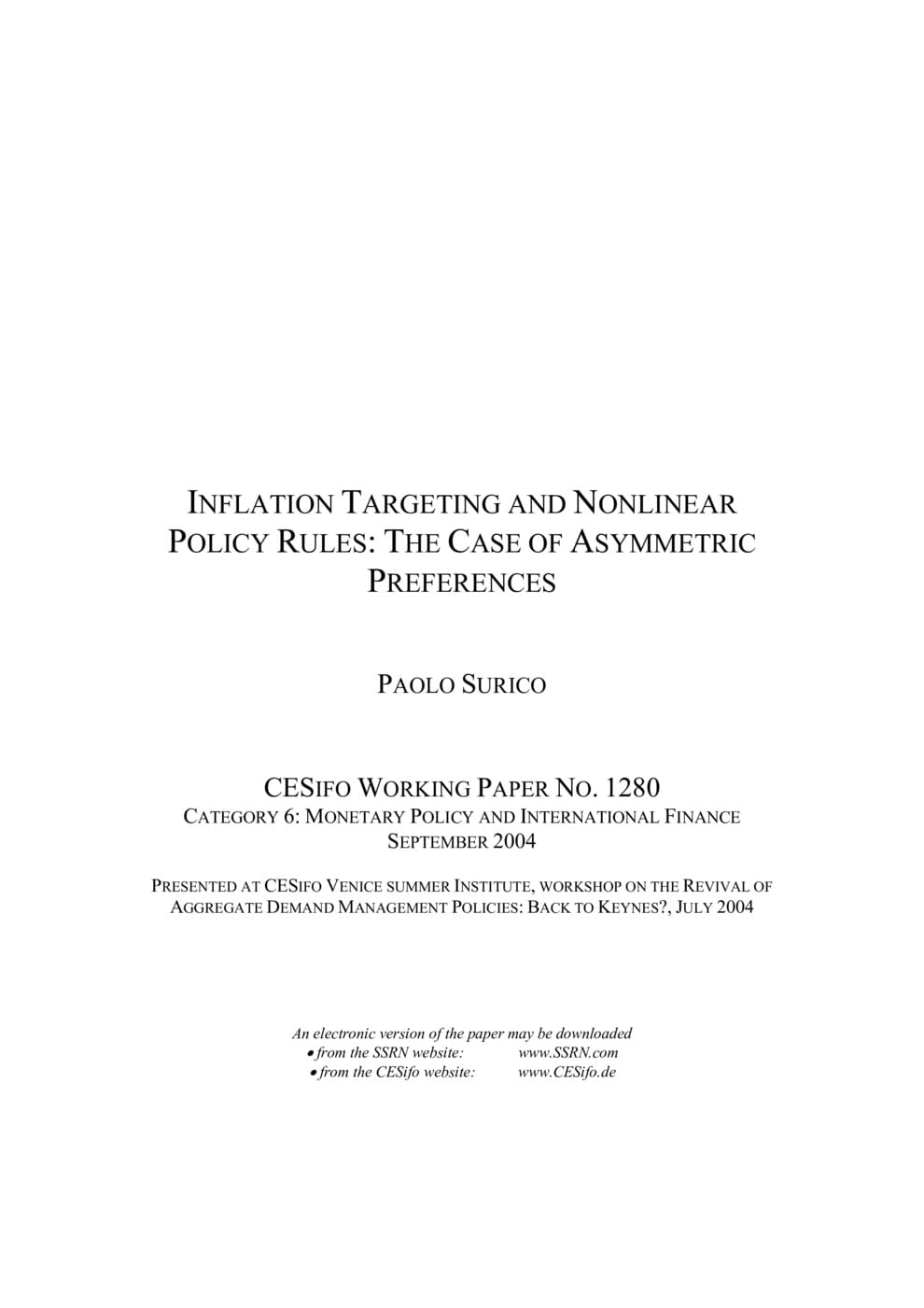Inflation Targeting and Nonlinear Policy Rules: The Case of Asymmetric Preferences (new title: The Fed's monetary policy rule and U.S. inflation: The case of asymmetric preferences)
CESifo, Munich, 2004
CESifo Working Paper No. 1280

This paper investigates the empirical relevance of a new framework for monetary policy analysis in which the decision-makers are allowed to weight differently positive and negative deviations of inflation and output from the target values. Reduced-form and structural estimates of the central bank first order condition indicate that the preferences of the Fed have been highly asymmetric only before 1979, with the response to output contractions being larger than the response to output expansions of the same magnitude. This asymmetry is shown to induce an average inflation bias of 1.11% that appears to have substantially contributed to the great inflation of the 1960s and 1970s.